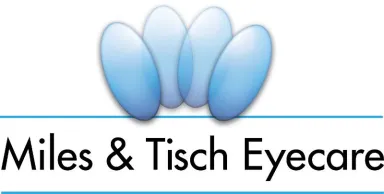It is estimated that nearly 4.88 million individuals over the age of 50 have dry eye syndrome, which is characterized by red, itchy, scratchy eyes. Thankfully, this common eye ailment is completely treatable once the causes are known.
Causes of Dry Eye
Dry eye occurs when there is a problem with the basal tears. Basal tears are not like emotional tears, which are comprised of oil, water, and mucus. The oil helps prevent the tears from drying too quickly on the surface of the eye. The watery layer helps the tears spread evenly over the eyes, and the mucus layer combines with the watery layer to help ensure eye hydration. If any of these layers are deficient, symptoms of dry eye can develop.
- Medications – The most common cause of dry eye is prescription and OTC medications including antihistamines. Usually, they will list dry eye as a side-effect.
- Older Adults – As we age, the basal tear production in the eyes can reduce. This is why most people who have dry eye are over the age of 50.
- Having an Immune Disorder – Autoimmune disorders can cause dry eyes. Common conditions include Lupus, rheumatoid arthritis and Sjogren’s syndrome.
- Having Allergies – Seasonal allergies can lead to dry, itchy scratchy eyes.
- Environmental Conditions – Individuals who work in dry, dusty or windy conditions can develop symptoms of dry eye.
Symptoms of Dry Eye
Dry eye can result in a wide range of symptoms that may not be readily noticeable. If you have any of these symptoms, it is important to call our office and schedule an appointment with the doctor to diagnose the causes of your dry eye and develop a dry eye treatment plan.
- Having blurry vision, difficulty seeing at night or a sensitivity to light
- Having eyes that are scratchy or feel gritty when you blink
- Having red eyes or feeling like your eyes are burning
- Sudden intolerance to wearing contact lenses
Dry Eye Treatment
Dry eye treatment starts with a thorough diagnosis that includes an eye exam to test your eye health and visual acuity. Next, our doctor will measure the volume and quality of your tears. If there is a problem with your tear production or the composition of your basal tears, a dry eye treatment plan will be developed.
Eye Drops, and Ointments
For mild dry eye, our optometrists may recommend eye drops, or ointments. Eye drops are typically used during the day to keep your eyes hydrated and to reduce symptoms. Ointments are placed in the eyes at night to help keep your eyes hydrated while you sleep.
Changing Medications
If you have one or more prescription or OTC medications that list dry eye as a side effect, our doctors may recommend talking to your family doctor about switching to medications that do not cause symptoms of dry eye.
Medications that Increase Tear Production
There are medications on the market that can increase your natural tear production. They can be prescribed drops such as Restasis and Cequa.
Temporarily or Permanently Closing Your Tear Ducts
If drops, ointments, and switching medications doesn’t help alleviate your dry eye symptoms, Dr Tisch and Dr. Minhas may recommend inserting plugs into your tear ducts to close them. The first step usually involves inserting temporary tear duct plugs to see if this helps alleviate your symptoms. If it does, we may recommend permanent tear duct plugs. Insurance may cover this in quick in-office treatment.
If you are having symptoms of dry eye, give our Miles & Tisch Eyecare office a call today at (212) 765-2660 to schedule an appointment.
Radio Frequency and IPL lid treatment
InMode Lumecca I and Forma I have been used for years to treat dry eye conditions at the meibomian gland level in the eye lid. The benefit of Forma I is seen with increase in natural tear production in the lid tissue and on the cornea. Better tear meibum levels may result in less reflex tearing and watery eyes as well as less redness and the reduction in the sensation of "dry eyes". This treatment also helps treat collagen in the lids resulting in reduction of fine lines around the eye. Lumecca I (IPL) is a treatment to the skin that can treat styes on the eyelid and blepharitis/demodex. This can also be used to aesthetically treat roscea (vascular areas) on the the skin and sun spots on the face. Dr Tisch and Dr. Minhas will discuss treatment options during your consultation.

